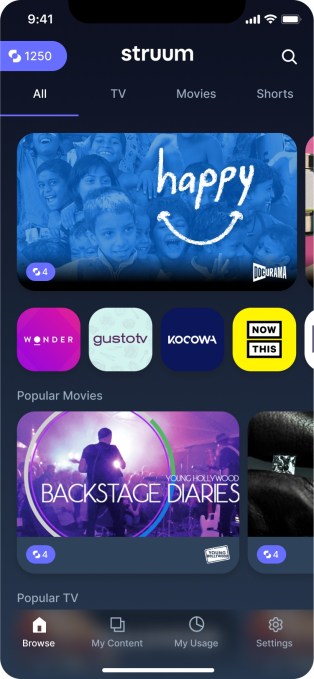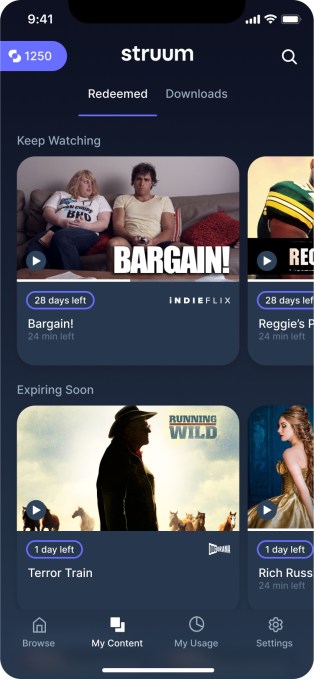News: A new book coauthored by Brad Feld invites founders to get their weekly Nietzsche
In all likelihood, you do not currently associate Friedrich Nietzsche, the German philosopher, essayist and cultural critic, with entrepreneurship. Serial entrepreneurs Brad Feld and Dave Jilk — whose friendship dates back to their college days at MIT — think that you should. Indeed, in the foreword of their new book, “The Entrepreneur’s Weekly Nietzsche: A
In all likelihood, you do not currently associate Friedrich Nietzsche, the German philosopher, essayist and cultural critic, with entrepreneurship.
Serial entrepreneurs Brad Feld and Dave Jilk — whose friendship dates back to their college days at MIT — think that you should. Indeed, in the foreword of their new book, “The Entrepreneur’s Weekly Nietzsche: A Book for Disruptors,” another renowned entrepreneur (and former philosophy student), Reid Hoffman, explains how Nietzsche has inspired him to think differently throughout his own career, noting that, like disruptive entrepreneurs, Nietzsche “wanted to destroy the old mindsets that locked people into the past” and that his “fierce allegiance to the new” is as relevant today as it was 150 years ago.
If setting aside precious time to study Nietzsche sounds daunting, don’t worry; Feld and Jilk clearly get it. Their new book tries to make his writings accessible, but they really focus more on their modern-day applicability, arranging their new book into 52 individual chapters — one for each week — that begins with a quote from one of Nietzsche’s works then quickly delves into an oral history from a founder that brings the quote to life.
Yesterday, we asked Feld, who has written books about venture capital and startup communities in the past, about the book. Our exchange has been edited lightly for length.
TC: What was the impetus for this new book?
BF: This has been an on-again, off-again project with Dave, my first business partner, that began in 2013. We were spending the weekend in Keystone with our wives Amy and Maureen, which generally involved a lot of sitting around reading. Dave was reading “On Nietzsche” by Eric Steinhart. He read a quote to me and asked if I thought it sounded like an entrepreneur. Dave remembers me saying, “Hmmm, it sure does.” Then we both went back to our books.
As Dave went deeper into studying Nietzsche, we kept talking about Nietzsche quotes that prompted discussions around aspects of entrepreneurship. I had gone deep into Stoicism and was in love with what Ryan Holiday was doing with his writing. His book “The Obstacle is the Way” had a huge impact on me.
By 2016, we’d started working on the book. When Ryan came out with “The Daily Stoic,” I suggested to Dave that we write a book using this format. After a little more work, we changed the approach a little, focusing on 52 quotes instead of 365, making our interpretation a little longer and adding a narrative from an entrepreneur to many of the quotes.
Nietzsche is an incredibly important and deeply misunderstood philosopher. He’s the bridge between many things that came before him — beyond just philosophy — and many things that have come after him. Rather than state the answer, he provokes and encourages deep thought. In some ways, he’s the perfect philosophical mentor for an entrepreneur since you can apply his quotes in many different ways.
Should this be placed in the business section or philosophy section of a bookstore?
Well, according to Amazon, it’s already showing up in both! Dave and I wrote this to be an entrepreneurship book, as applied philosophy, but our fantasy is that philosophers who appreciate applications will like what we’ve done. We’re not experts on Nietzsche, nor do we pretend to be Nietzsche scholars. However, we have both read a lot of Nietzsche in the (translated) original at this point, and Dave has studied Nietzsche extensively, so we’ve been deliberate in the quotes we’ve chosen and how we interpret them.
Entrepreneurs are often too busy to be introspective, as you acknowledge in the book. How do you persuade them to make the time?
Entrepreneurship is extremely challenging. It can be excruciatingly difficult. The highs are extraordinary. The lows are devastating. They come endlessly, with unexpected frequency.
If you don’t know your “why,” being an entrepreneur is much more difficult than it needs to be. And, no one can tell you your “why” — you have to discover it for yourself. As you grow, experience and age, your “why” will change. You have to build the muscle to continually figure out your “why,” and figure out how it relates to what you are doing.
If you can’t make the time for this, your journey as an entrepreneur will be much harder. When you face failure, it could be catastrophic or permanent rather than episodic. When you find yourself struggling emotionally, you won’t have the tools to figure out what to do to emerge stronger. While you may utter Nietzsche’s famous quote, “What does not kill me makes me stronger,” if you haven’t thought about it, you are echoing a cliché rather than incorporating an important concept into your way of being.
As for when [to find the time], we talk in the book about establishing cycles of “stepping back” from the business. We discuss the notion of a “metastrategy” — what is your strategy for periodically revising your strategy? We also observe that when things are going well you are likely to plateau, making that an important — though counterintuitive — time to think hard.
There are great oral histories throughout this book. How did you choose the storytellers and were they interviewed or did you email them questions, then edit down their responses?
We focused on experiences we were aware of and people we thought might have some connection to the quote. We used our primary network but didn’t try to be exhaustive. Some of the experiences we already knew about or had played a role in; others were new to us.
We emailed them the quote and a short guideline of what we were looking for. In most cases they wrote a nearly finished narrative; in a few cases, they gave us an outline and we filled it in, or we interviewed them and wrote the text ourselves. We wanted these narratives to feel like the entrepreneurs were talking to the reader in their own voices, and telling the stories that occurred to them, rather than making it an extension of the essay.
We especially love the [stories] where the narrative went in a different direction than our preceding essay, as it demonstrates the different ways Nietzsche can provoke thoughts from a simple quote.






